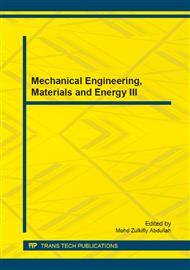p.170
p.174
p.177
p.182
p.186
p.194
p.199
p.203
p.208
The Effects of Stack Parameters on the Performances of Acoustic-Refrigeration Thermoacoustic Conversion System
Abstract:
In this research, the acoustic-refrigeration thermoacoustic conversion system numerical model was constructed, the combined influences of structural and positional parameters of stack on the temperature difference at two ends (DT) and the coefficient of performance (COP) were analyzed. Besides, the acoustic-refrigeration thermoacoustic conversion test system was built up. Finally, experiments were performed to testify the calculation results of the conversion system. The results showed that within the common ranges of the parameters values, the porosity of stack affected the COP slightly while the temperature difference seriously, the temperature difference at the two ends of stack increased with the increase of the porosity of stack; for stacks which have the same porosity and gaps between each parallel plate, two values for the center position of stack were exist of which one could make the temperature difference get to the best value, the other one made the COP achieve the maximum value; when the porosity and the center position of stack remained constant, the temperature difference increased first and decreased afterwards with the increase of the gaps height between each parallel plate. In the selected model, the temperature difference at the ends of stack got an ideal value when 2y0=0.45 mm (the gaps height between each parallel plate was nearly about 2.4 times than thermal penetration depth). The results provided the theoretical basis and experimental evidences for improving the performance of acoustic-refrigeration thermoacoustic conversion system.
Info:
Periodical:
Pages:
186-193
Citation:
Online since:
December 2013
Authors:
Price:
Сopyright:
© 2014 Trans Tech Publications Ltd. All Rights Reserved
Share:
Citation:


